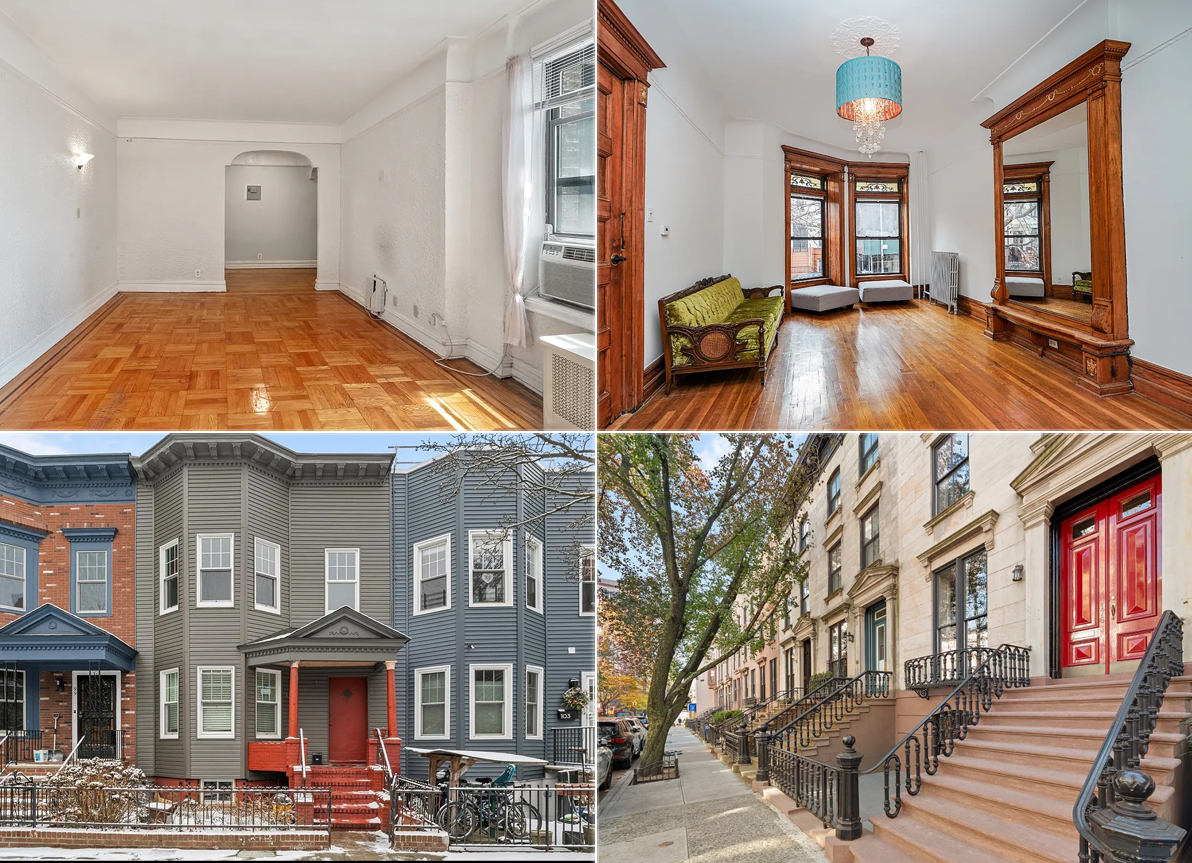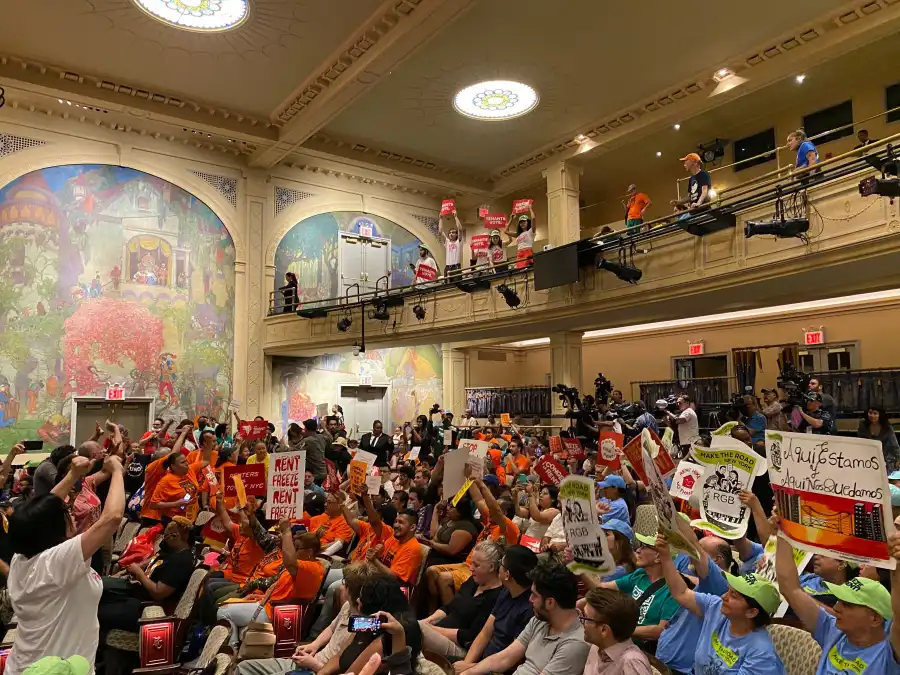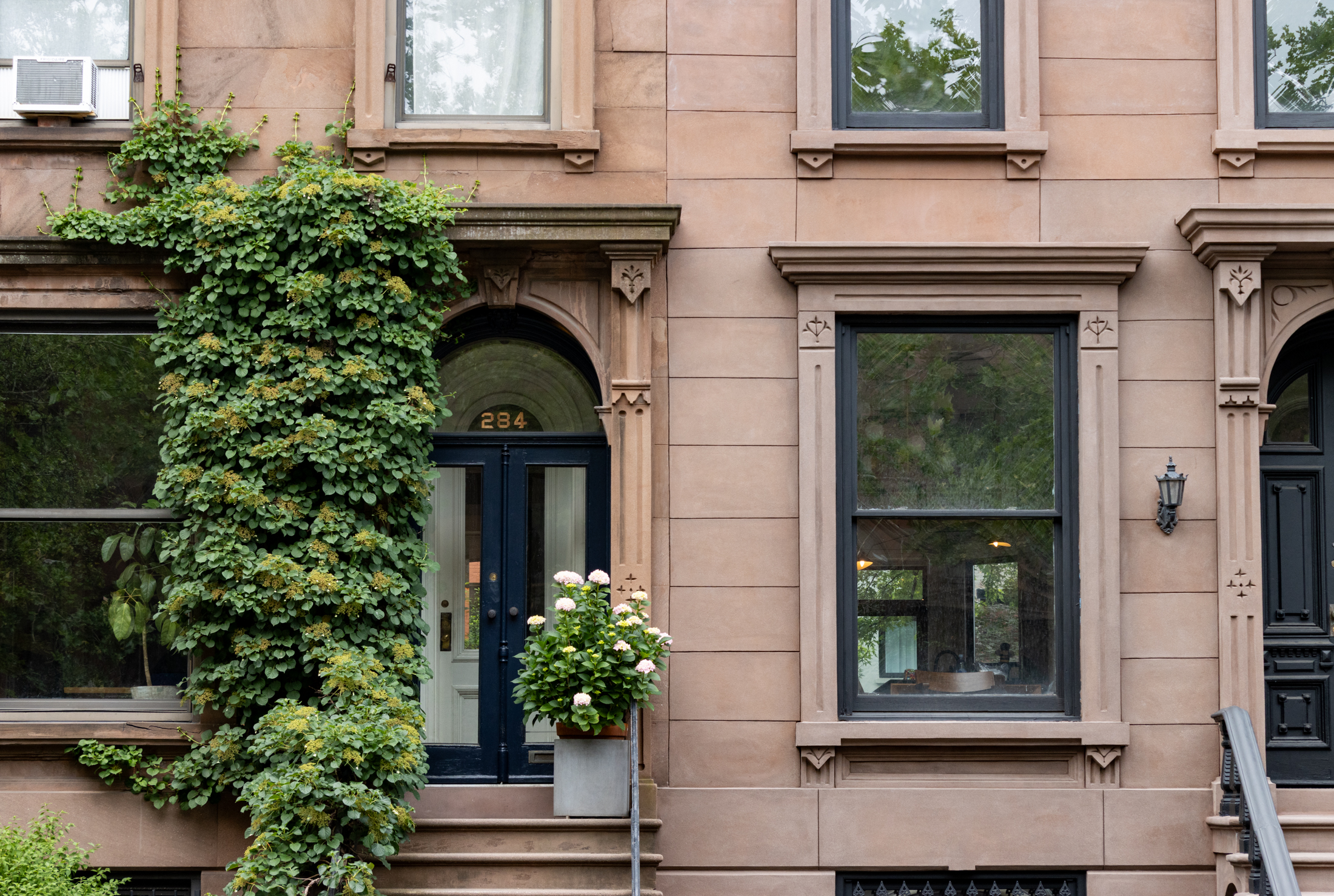The Hot Seat: David Colley and Elizabeth Keegin Colley
Welcome to The Hot Seat, in which we interview folks involved in Brooklyn real estate, architecture, and the like. Introducing David Colley and Elizabeth Keegin Colley, the authors of recently released “Prospect Park: Olmsted and Vaux’s Brooklyn Masterpiece.” The book is a detailed, visual look at the history of Brooklyn’s best park. (Check out a trailer…


Welcome to The Hot Seat, in which we interview folks involved in Brooklyn real estate, architecture, and the like. Introducing David Colley and Elizabeth Keegin Colley, the authors of recently released “Prospect Park: Olmsted and Vaux’s Brooklyn Masterpiece.” The book is a detailed, visual look at the history of Brooklyn’s best park. (Check out a trailer for the book here.) The authors will speak about the book Saturday, September 21 at 2 pm at the Dweck Center of the Brooklyn Public Library as part of a Brooklyn Book Festival Bookend event. Park landscape architect Christian Zimmerman will lead a park tour after the presentations.
Brownstoner: What neighborhood do you live in, and how did you end up there?
David Colley and Elizabeth Keegin Colley: While working on the book we were staying in a beautifully located apartment near the library, the Brooklyn Museum and the Botanic Garden. It was a wonderful neighborhood and convenient to Prospect Park so that Mary Liz [Elizabeth Keegin Colley, the book’s photographer] could be out at all times of day and night and in all seasons capturing the moods of the park.
BS: What first drew you to Prospect Park, and why did you decide to write the book?
DC + EKC: With backgrounds in city planning, park boards and a shade tree commission, we have always loved parks. When traveling, we go to museums, take long walks, but spend inordinate amounts of time in public parks. When we heard the Prospect Park Alliance was looking for proposals for a history we responded immediately as a writer/photographer team. We have often worked together but this was a terrific opportunity and the first time we both started with just the germ of an idea and continued to publication. It has enriched our lives tremendously.
After the jump, the many joys of photographing Prospect Park, what the park was like in the ’70s and ’80s, and some little-known facts about Olmsted and Vaux’s masterpiece.
BS: The book is full of amazing photographs. Can you tell us about the photographer’s experience, exploring the park and looking for images to shoot, as well as the process of finding older, historic photos?
EKC: I had the good fortune to spend considerable time in the park and had some understanding of its history and design. It was a dream assignment and the most meaningful work of my career. My images are a reflection of the Olmsted and Vaux plan emphasizing the interplay of light and shadows, color, texture and the rhythm of nature and people. I was in the park all seasons — even during two blizzards and dreary, sloppy afternoons — and I was stunned by its beauty. But it wasn’t just its natural beauty –- the dark shadows stretching across the Long Meadow, the great egret in its breeding plumes, the Ambergill in the snow, the curving Lullwater ablaze in fall colors — that I loved, it was also the joy and exuberance engendered by the park.
Twenty-somethings cartwheeling down the Long Meadow, the expression of a four year old as his soccer ball careens toward the goal, elegant picnics in the setting sun before a Philharmonic concert, or a fully covered woman throwing a football all convey the spirit that Olmsted and Vaux wanted to create. The landscape shots could be somewhat anticipated by the hour of the day and an exact day of a season but the shots of people were created by watching and being prepared. This all was what I wanted to capture. But, as this was a landscape architecture book there were many more landscape images used.
The Prospect Park archives provided all of the archival images. We went through them early on, and they mean much more to us now!
BS: What was the state of the park in the ’70s and early ’80s? Can you talk about the momentum behind the park restoration in the 1980s?
DC + EKC: Horrible! That was the state of the park in the ’60s and ’70s. New York City was on the verge of bankruptcy and Mayor Beame asked President Ford for federal assistance. You may remember the 1975 headline in the Daily News: “Ford to City: Drop Dead.” In financial crises parks are among the first departments to have their budget slashed. The Long Meadow looked like an actual meadow, the uncut grass was so high. The benches were splintered. The Ravine hills were pounded bald by hikers and rutted by dirk bikes, creating such terrible erosion that no new growth would survive. Many of the buildings were closed and covered with graffiti. Crime was an issue and people were scared to enter the park. In fact when policemen were assigned to ride with bicyclists, one remarked, “My God, has it come to this, that we need a wagon train sort of thing?”
Local park advocates and volunteers organized and began to demand change and in the late 1970s Gordon Davis became the City Parks Commissioner and responded. Foremost, he hired Tupper Thomas as administrator and gave her the authority to begin restoring the park. Slowly the park came back: The Bandshell, and the Olmsted/Vaux designed views from the southern part of the Long Meadow that had been obliterated by baseball bleachers and high chain link were restored. The Alliance, part of a public/private partnership with the city, was formed in the mid 1980s. Its first project was restoration of the carousel, then the Ravine, the Boathouse and the Lullwater. Many park supporters believe that success of the Ravine project signaled the rebirth of Prospect Park. Thomas’ tenure culminated with the start of the construction of Lakeside.
BS: Since the restoration in the ’80s, how has the park grown and changed?
DC + EKC: Once the restoration process was in full swing, the park was being returned to its former glory. People were no longer afraid to come and today as many as 10 million visit the park every year in contrast to around a million who dared come in the late ’70s. An important factor in the process is to restore it according to the intentions of Olmsted and Vaux, to keep the “good bones,” while adapting it to the many changes over the years and to modern needs. For example, structures like the Boathouse, the Peristyle and the Tennis House were built at the turn of the 19th to the 20th century and reflect the neoclassical style of architecture deemed inappropriate by Olmsted and Vaux. Yet they are now iconic fixtures in the park and are integrated into the overall park plan. Twenty-first century requirements must also be taken into account. The Binnen Pool was originally dug to a depth of three feet. It was ornamental without regard to environmental needs and too shallow to attract much wildlife. It was recently dug to a depth of nine feet to accommodate frogs, turtles and reptiles.
BS: What’s most exciting to you about the future of Prospect Park?
DC + EKC: That it will be sustained. With the creation of the Alliance, Prospect Park’s future is more assured than it ever was. The Alliance raises the necessary funds to improve the park. Also, the resurgence of Brooklyn means that for the first time since the 1950s, when Brooklyn started its decline, the borough is being rejuvenated with an influx of new residents who are educated in the need to preserve the city’s and the nation’s heritage. And Prospect Park is a crown jewel not only in Brooklyn but in New York City.
BS: Finally your favorites — favorite Brooklyn neighborhood, favorite spot in the park, and favorite little known historic fact about the park.
DC + EKC: We have many favorite neighborhoods each with a different draw. All of Brooklyn is exciting and its resurgence is reassuring not only for the borough and the city but for Prospect Park.
We really don’t have a favorite spot in the park. It’s like asking who is your favorite child. Olmsted and Vaux designed it so that its separate elements are equally appealing: the Long Meadow, the Ravine and the Lake. They were to be appreciated separately and together as a whole. Every part of Prospect Park is enticing, as it was designed to be. You can be in the rugged Ravine and literally feel lost in the woods, as you are supposed to feel. You can walk on the Long Meadow and make believe that this green, undulating ground goes on forever to some mythical place. You can be on the Lake and feel you are on a remote lake, not one that is surrounded by 2.5 million people in the most populated borough in New York City. It really is a sanctuary from the stress of daily life and living in a boisterous, teeming urban area.
There are so many fascinating details about Prospect Park. One of our tops is that it was created 150 years ago yet still meets the needs of today’s Brooklynites. A walk in the park today is just as it was designed and experienced the same way. And the many activities of picnics, soccer, volleyball, and cricket played cheek by jowl fit in perfectly. The park is free and welcoming to all of the very diverse, multilingual, multicultural residents of Brooklyn. We like to think Olmsted and Vaux would be pleased!
Another fact is that the park is almost all manmade by up to 1,800 laborers using picks and shovels. Yes, there was an area for the Long Meadow, but it was a barren and unfruitful plot filled with peat bogs, clay and scrub brush. The Ravine forest was there, but not the watercourse, the ponds, or the Ambergill and Upper Pool Falls at the Fallkill. These were constructed by hand. And the lake was open farmland. The earth was removed and the lake appeared.
One additional historic fact: James S. T. Stranahan. Some talk of the park as being an Olmsted park or an Olmsted and Vaux park but James Stranahan, the wealthy Brooklyn businessman, was really the brains and force behind the park. It was the collective genius of these three men that created Prospect Park. Stranahan wanted a Brooklyn park to match Central Park; he wanted to draw affluent New York City residents across the East River to live around the new park and raise Brooklyn’s stature and its tax base. He pushed and cajoled to see the park come into being. What was supposed to be a $300,000 project turned out to be a $10,000,000 project. But it was magnificent.





What's Your Take? Leave a Comment